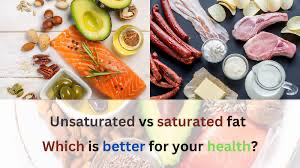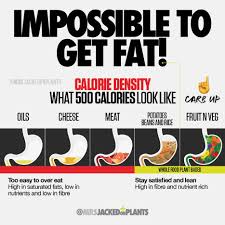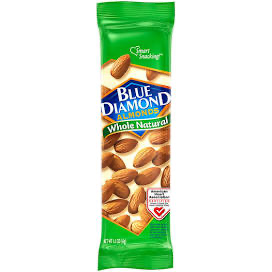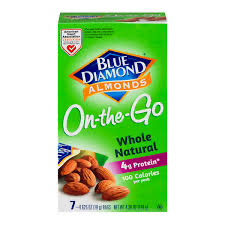Now, what about the “good fats” such as avocados, olives, nuts and seeds and vegetable oils (the exception being coconut oil which has very high levels of saturated fat) and fatty fish such as salmon, trout and mackerel. Can we eat them in unlimited portions? Or how much is too much?



First off, the general problem with any type of fat—whether saturated or unsaturated is that it is much more calorie dense than that of protein or carbohydrate and can easily lead to with gain. So, no matter what, we always need to be cognizant of this. Specifically, though, most doctors and nutritionists indicate that we should limit unsaturated fat (for the purpose of this article, I won’t delve into the differences between monounsaturated and polyunsaturated since that is a slightly different issue —one that leads to a discussion of being vegan) to no more than 25% of our total calories. So using once again a 2000 calories daily total, this means that no more than 500 calories should come form unsaturated fat. At 9 calories per gram, this comes to 55.5 grams.
Where do we get our unsaturated fat and how much do we normally eat? This question is kind of deceiving because so much of the time, we “unconsciously” consume a huge amount of this type of fat. For example:
Oftentimes, our vegetables are stir fried in at least one tablepoon of olive oil. Well, that one tablespoon contains 120 calories and a full 14 grams of fat! I might add here that oil (whether olive or corn or soybean, etc) is the most calorie dense food on this planet AND has virtually NO nutritional value. And we don’t even “consider” the fact that we are “eating” empty calories (those of the oil) because what we think we are doing is eating healthy vegetables. And because of this, we normally pour on the oil to the extent that a stir fry has two tablespoons of oil—240 calories and 28 grans of fat. And we dont’ even think this “counts!! The additional calories from the oil (whether olive oil—the “better type” or coconut oil or soybean oil or even butter) never fill us up, but clearly add a huge amount of extra and unnecessary calories. With weight gain, it’s all about calories density and “filling your stomach” to creat satiety. Oil, no matter the source, simply has hardly any satiety factor and hence, people just keep eating and eating and eating! (Think French fries and potato chips). With fruits and vegetables and all sorts of whole plant foods, it’s nearly impossible to get fat if they comprise the vast majority of one’s diet. Adding fats to that equation, however, can cause tremendous weight gain. Take a look at this chart:

Then, what about a six ounce serving of salmon (which nearly everyone things is healthy): Well, that is 9-10 grams of unsaturated fat. But what about pan seared salmon or grilled salmon brushed with olive oil or salmon stir fry or salmon marinade? Also of these would add at least another 5-10 grams of unsaturated fat.
Then, how about avocados—half an avocado—the normal serving size is a full 10 grams of fat! And who can stop at just half an avocado when eating guacamole? How about a salad with olive oil dressing and half an avocado? Well, the half avocado has 10 grams of unsaturated fat and the two tablespoons of olive oil dressing has another 28. So, just with the simple salad, you’ve already had nearly 2/3 of the daily maximum of unsaturated fat. And the calorie content—the olive oil dressing alone has about 240 calories. Then, the avocado another 130, then what about the vegetables (the best part of the salad)-maybe another 50 to 60. So all told, just the salad alone has about 430 calories, representing over 20% of one’s total calories per day. This is based on a 2000 calorie diet. It’s no wonder why we are so overweight!!
Okay, so you might think that you don’t normally have so much oil and don’t eat much fish. What about the following foods—I bet most everyone eats some of these:
- Nuts and Seeds (1 ounce): About 12-15 grams of unsaturated fat.
- Nut Butters (2 tablespoons): Around 7-9 grams of unsaturated fat.
- Canola Oil (1 tablespoon): Roughly 8-9 grams of unsaturated fat.
- Hummus (2 tablespoons): About 1-2 grams of unsaturated fat.
- Trail Mix (1 ounce): Varies widely depending on ingredients, but can range from 4-6 grams of unsaturated fat.
Don’t get me started on peanut butter! I never stopped at 2 tablespoons. It was usually at least 4 and so that alone came in at around 18 grams of unsaturated fat (32% of the maximum daily amount). Even raw “healthy almonds” —-a one ounce serving is at 16 grams of unsaturated fat. I would never be satisfied with one ounce—that single serving package that is so common these days is tiny!!



So, what’s the problem—isn’t’ unsaturated fat healthy for you? It’s true that healthy (unsaturated) fats are the ones that benefit the body by doing things like controlling inflammation and maintaining cells. With nearly every search I’ve made on the internet, results in positive things to say about unsaturated fats. There is hardly much mention at all to eating “too much” of them. But it’s certainly possible to do so and it’s a simple fact that we consume WAY too much of them with the standard American diet. In doing so, the result will be weight gain for sure, and quite possibly tremendously increased risks of diseases such as diabetes and heart disease.
